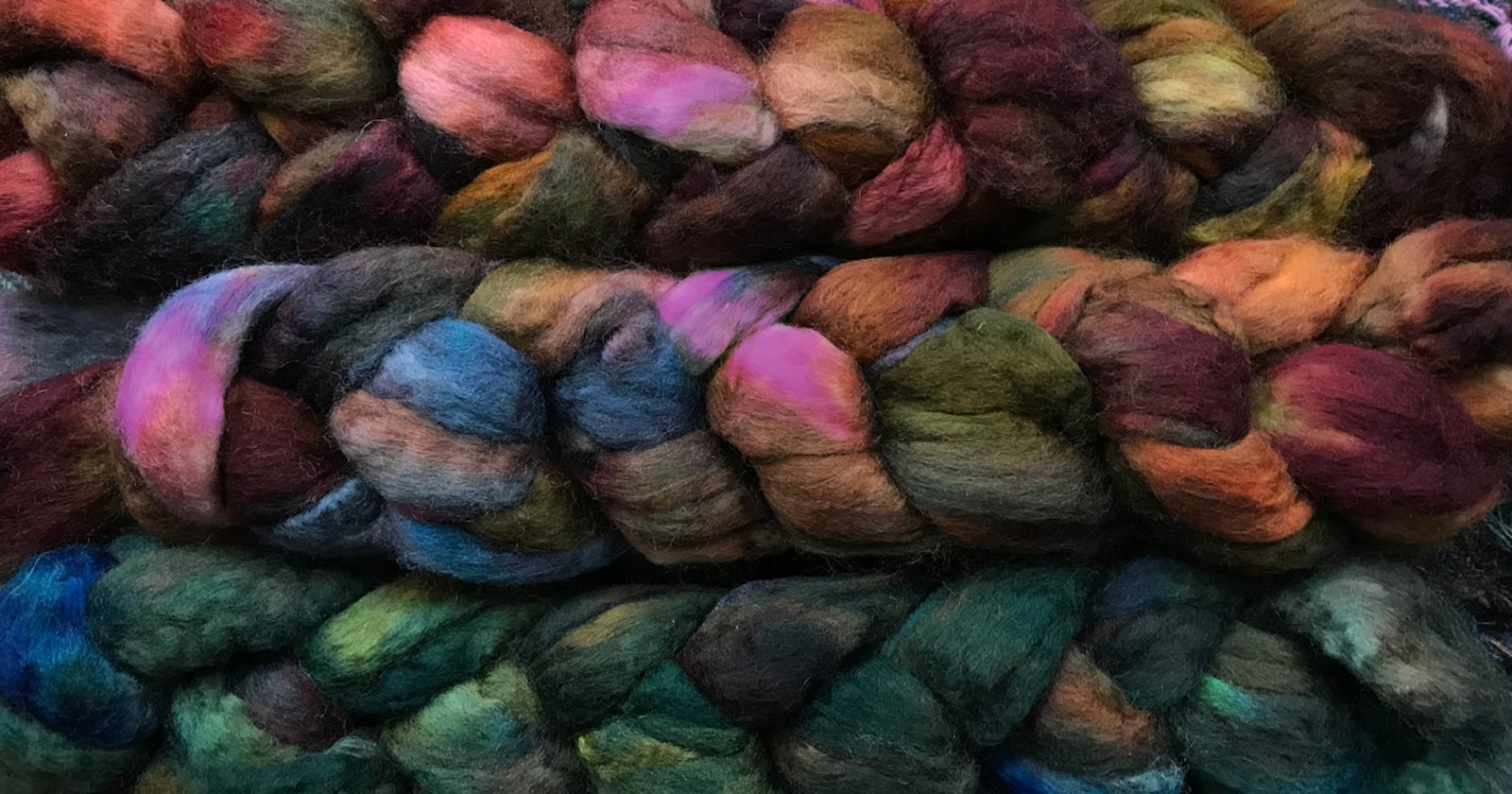
There are as many definitions of “art yarn” as spinners who make it. The older terms designer yarn and novelty yarn have their own connotations. “Novelty” in particular might sound frivolous, like a temporary fad without serious merit or historical roots. Yet ancient textile finds from various places and eras include feathers spun into yarns, precursors to today’s art yarns. Novelty yarns include a wide variety of yarns made with unusual features, structure, or fiber composition. If you're striving for the smoothest, most even worsted or the loftiest woolen yarn, stopping to add in locks without drafting them or even tossing some commercial yarn into the mix may seem like a distraction.
It can also be all too easy to forget that spinning is supposed to be fun. There is joy in mastery, in stretching your limits and making yarn that meets an established standard of quality. There is also joy in play. Letting go of the criteria by which you usually measure your yarn is also stretching your abilities in new directions that lead away from the straight and narrow. Spinning art yarns builds skills and muscles in your hands and helps you break out of the well-worn groove that many of us find ourselves in.
Spinning Prepared and Unprepared Fibers

By Symeon North
You can alternate using combed or carded wool with locks to make the untamed fibers really “pop.” Prepared fibers are generally easier to work with than locks are; depending on the preparation method, the fibers are all loosened or going in the same direction. Using unprepared fibers will create more texture and provide a unique look to the yarn.
Plying in Locks

By Symeon North
Instead of adding locks in singles, you can create yarn with unspun elements when plying. The twist that holds the plies together can capture additional fiber and hold it firmly; instead of locks, try sari silk, lengths of yarn, or other items.
Autowrapping Novelty Yarn

By Jacey Boggs
Autowrap—the name says it all. With a traditional orifice, this is a wrap that wraps itself automatically. If you have an outie orifice, a delta, or a ring, you can get similar results, but it’s not quite so automatic. Requiring minimal labor, this great technique gives a yarn mystery and zing with its peculiar perpendicular wrapping and just gets more impressive when combined with other techniques.
Making Fine Bouclés (Not quite from scratch!)

By Judie Overbeek
Making bouclés is wonderful fun and results in an endless variety of bumpy textured yarns to use in knitting or weaving projects. Fine bouclés, for use as carry-alongs in knitting or as accent yarns in weaving, don’t necessarily stand on their own but become textural color enhancements wherever they are used along with a background yarn. They are constructed from fine yarns, either commercial or handspun, and sewing thread.
Happy spinning,
Anne

